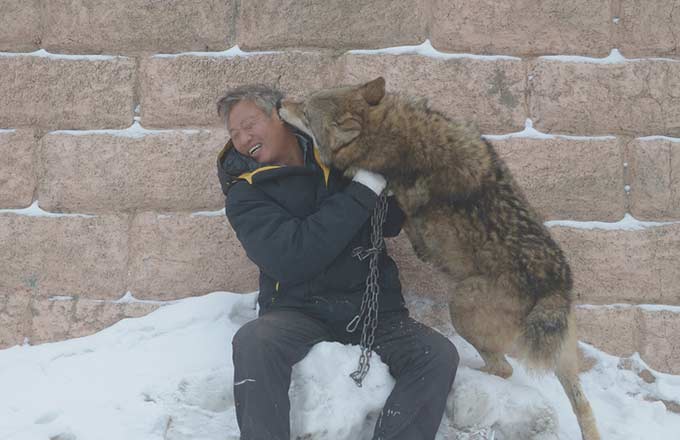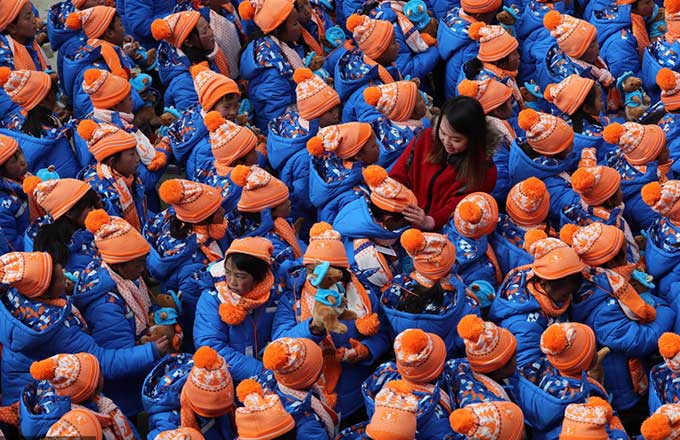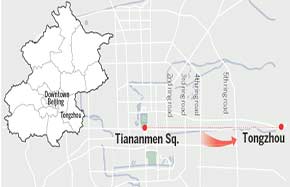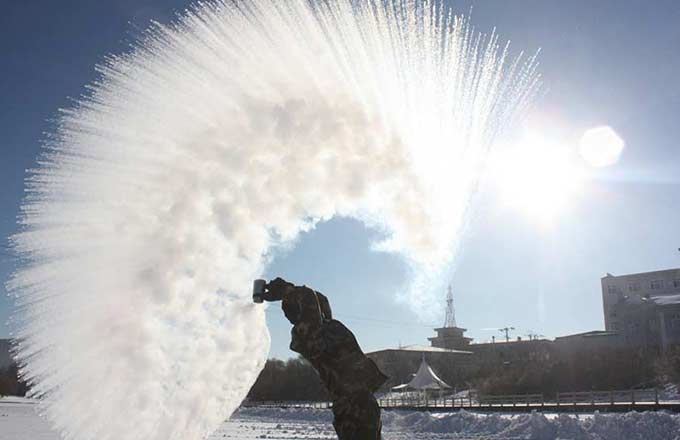Water diversion in N China revives former wasteland
HOHHOT - On a lake surrounded by reeds, the water's surface sparkles with ripples. It is freezing a bit around the edges.
Standing on a wooden walkway, a local named Chinnger is surprised to find the ice on the surface almost reaches his feet.
"Just three months ago, the lake's edge was five to six meters away," says Chinnger, who lives in Subunur Township of Ejin Banner in north China's Inner Mongolia.
The difference in water levels at Juyanhai Lake is the result of a project that is part of national efforts to divert rivers to restore the environment and reduce sand storms.
According to the banner's water department, the total volume of water diverted to the lake from Heihe, a major upper branch of the Yellow River, doubled to nearly 900 million cubic meters over the past year. The lake's area reaches 42.5 square kilometers at peak levels and has helped irrigate 1 million mu (6,666 hectares) of pasture.
Ejin Banner, located in the Badain Jaran Desert, has made the news recently for the launch of the Shenzhou-11 manned spacecraft. Before that, the county's dubious claim to fame was as the worst source of sand storms in China.
Juyanhai Lake, at the end of a stream off the Heihe River, had been one of the largest lakes in northwest China, covering 2,600 square kilometers, an area the size of Luxembourg. The lake nourished the region until 1992, when it dried up due to centuries of excessive grazing and desertification.
Chinnger still remembers how the lake looked without a drop of water. He and his friends often played in the lake basin when they were young.
"The soil was cracked, with saline marks and fish bones everywhere, like a nightmare," he recalls.
According to the government records, total water volume of the Heihe River flowing downstream shrank from 1.16 billion cubic meters in the 1950s to 730 million cubic meters in the late 1990s. Only 300 million cubic meters reached the Ejin area, and the deteriorating environment led to serious sand storms.
Forced to change, a dedicated administration for the Heihe River was set up under the Yellow River Conservancy Commission of the Ministry of Water Resources in 2000. The administration launched the Heihe River Water Diversion Project in 2003 to nurture barren land and water nearby pastures via Juyanhai Lake.
Following the diversion, the number of sand storms dropped to 3.5 on average annually over the past five years from 5.85 before the diversion project was launched, according to the administration.
Luo Jinyu, deputy head with the banner's forestry bureau, says the water has increased coverage of desert poplar trees in Ejin Banner to 444,000 mu from 390,000 mu in 2000.
The number of birds around the lake has also surged from a few thousand to over 30,000, according to local monitoring data.
The improved environment has also drawn tourists.
Tourism official Liu Jie says 513,700 tourists, up 21 percent year on year, brought a total revenue of 682 million yuan to the banner during the National Holiday in October, up 30 percent year on year.
"Swallows, swans and wild ducks -- numerous bird species are here from March to November," says Chinnger. "Better ecology has brought more tourists -- and income for us."



















